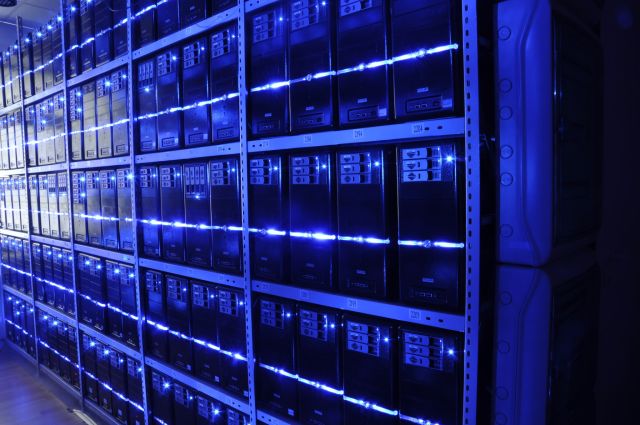
BalticServers.com
Data centers powering the generative AI boom are gulping water and exhausting electricity at what some researchers view as an unsustainable pace. Two entrepreneurs who met in high school a few years ago want to overcome that crunch with a fresh experiment: sinking the cloud into the sea.
Sam Mendel and Eric Kim launched their company, NetworkOcean, out of startup accelerator Y Combinator on August 15 by announcing plans to dunk a small capsule filled with GPU servers into San Francisco Bay within a month. “There’s this vital opportunity to build more efficient computer infrastructure that we’re gonna rely on for decades to come,” Mendel says.
The founders contend that moving data centers off land would slow ocean temperature rise by drawing less power and letting seawater cool the capsule’s shell, supplementing its internal cooling system. NetworkOcean’s founders have said a location in the bay would deliver fast processing speeds for the region’s buzzing AI economy.

But scientists who study the hundreds of square miles of brackish water say even the slightest heat or disturbance from NetworkOcean’s submersible could trigger toxic algae blooms and harm wildlife. And WIRED inquiries to several California and US agencies who oversee the bay found that NetworkOcean has been pursuing its initial test of an underwater data center without having sought, much less received, any permits from key regulators.
The outreach by WIRED prompted at least two agencies—the Bay Conservation and Development Commission and the San Francisco Regional Water Quality Control Board—to email NetworkOcean that testing without permits could run afoul of laws, according to public records and spokespeople for the agencies. Fines from the BCDC can run up to hundreds of thousands of dollars.
The nascent technology has already been in hot water in California. In 2016, the state’s coastal commission issued a previously unreported notice to Microsoft saying that the tech giant had violated the law the year before by plunging an unpermitted server vessel into San Luis Obispo Bay, about 250 miles south of San Francisco. The months-long test, part of what was known as Project Natick, had ended without apparent environmental harm by the time the agency learned of it, so officials decided not to fine Microsoft, according to the notice seen by WIRED.
The renewed scrutiny of underwater data centers has surfaced an increasingly common tension between innovative efforts to combat global climate change and long-standing environmental laws. Permitting takes months, if not years, and can cost millions of dollars, potentially impeding progress. Advocates of the laws argue that the process allows for time and input to better weigh trade-offs.
“Things are overregulated because people often don’t do the right thing,” says Thomas Mumley, recently retired assistant executive officer of the bay water board. “You give an inch, they take a mile. We have to be cautious.”
Over the last two weeks, including during an interview at the WIRED office, NetworkOcean’s founders have provided driblets of details about their evolving plans. Their current intention is to test their underwater vessel for about an hour, just below the surface of what Mendel would only describe as a privately owned and operated portion of the bay that he says is not subject to regulatory oversight. He insists that a permit is not required based on the location, design, and minimal impact. “We have been told by our potential testing site that our setup is environmentally benign,” Mendel says.
Mumley, the retired regulator, calls the assertion about not needing a permit “absurd.” Both Bella Castrodale, the BCDC’s lead enforcement attorney, and Keith Lichten, a water board division manager, say private sites and a quick dip in the bay aren’t exempt from permitting. Several other experts in bay rules tell WIRED that even if some quirk does preclude oversight, they believe NetworkOcean is sending a poor message to the public by not coordinating with regulators.
“Just because these centers would be out of sight does not mean they are not a major disturbance,” says Jon Rosenfield, science director at San Francisco Baykeeper, a nonprofit that investigates industrial polluters.
School project
Mendel and Kim say they tried to develop an underwater renewable energy device together during high school in Southern California before moving onto non-nautical pursuits. Mendel, 23, dropped out of college in 2022 and founded a platform for social media influencers.
About a year ago, he built a small web server using the DIY system Raspberry Pi to host another personal project, and temporarily floated the equipment in San Francisco Bay by attaching it to a buoy from a private boat in the Sausalito area. (Mendel declined to answer questions about permits.) After talking with Kim, also 23, about this experiment, the two decided to move in together and start NetworkOcean.
Their pitch is that underwater data centers are more affordable to develop and maintain, especially as electricity shortages limit sites on land. Surrounding a tank of hot servers with water naturally helps cools them, avoiding the massive resource drain of air-conditioning and also improving on the similar benefits of floating data centers. Developers of offshore wind farms are eager to electrify NetworkOcean vessels, Mendel says.